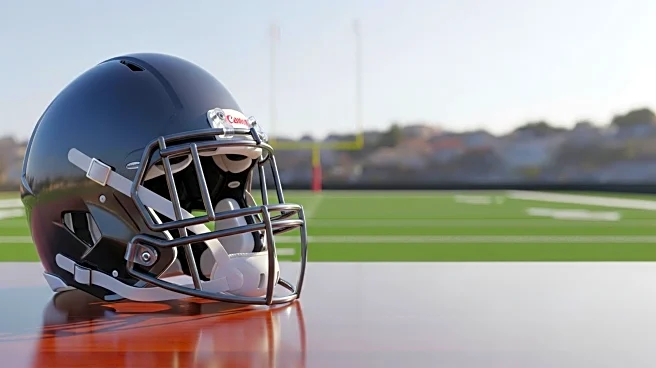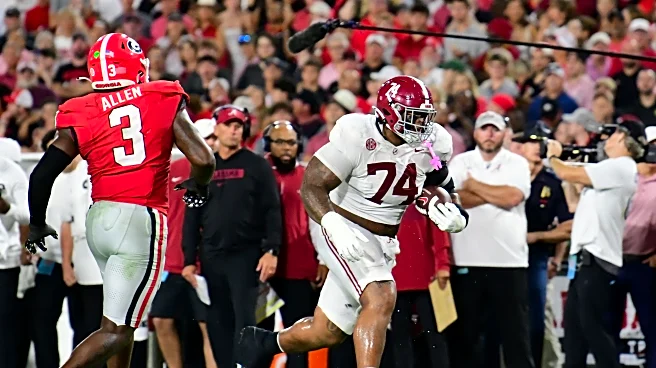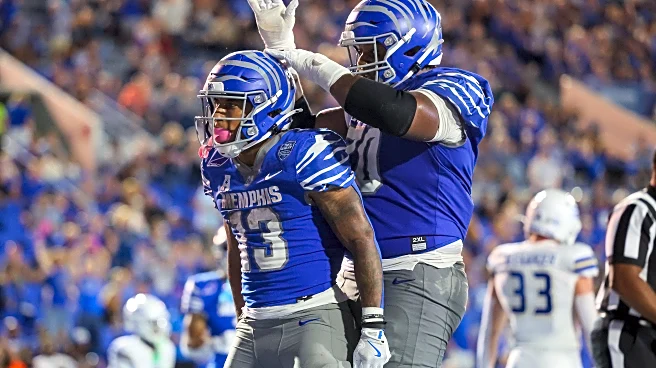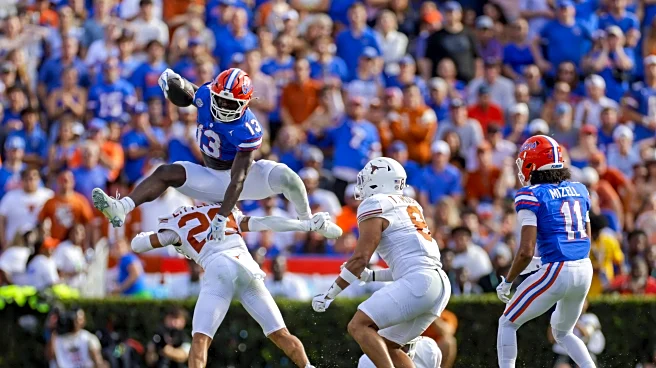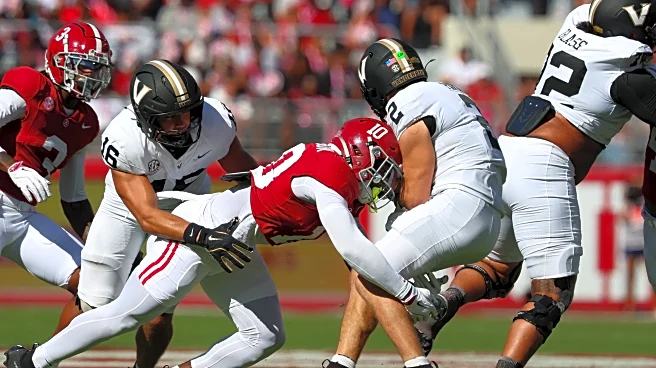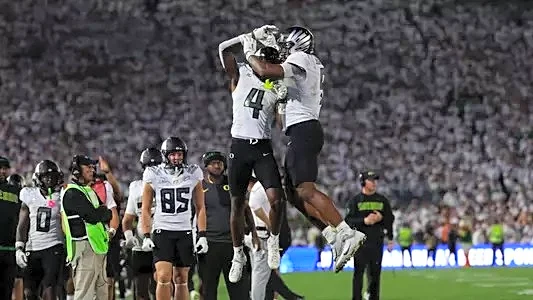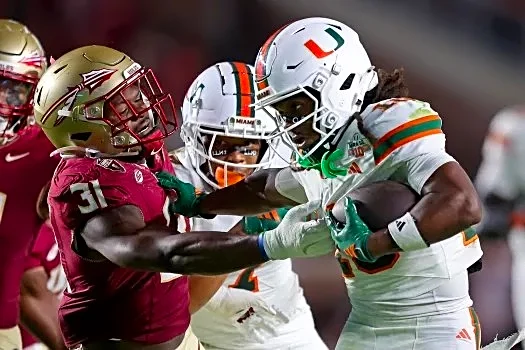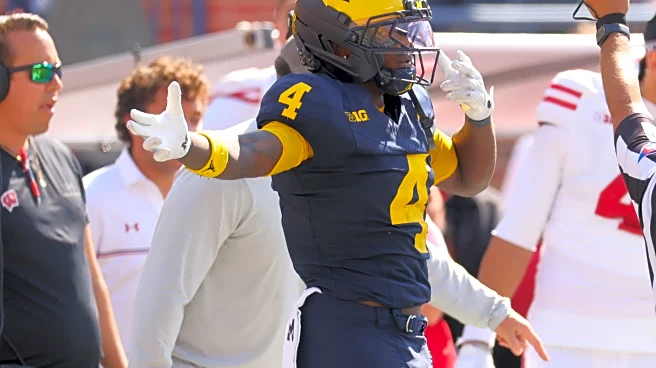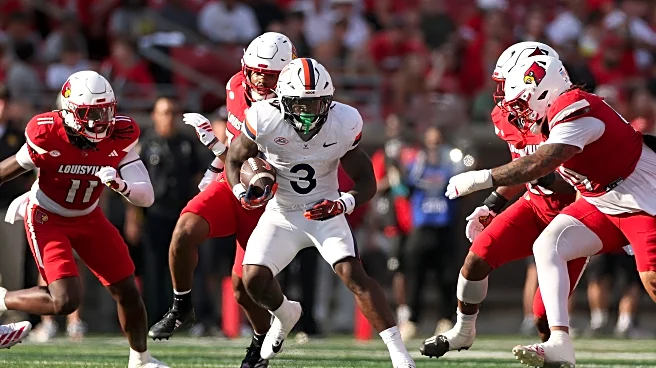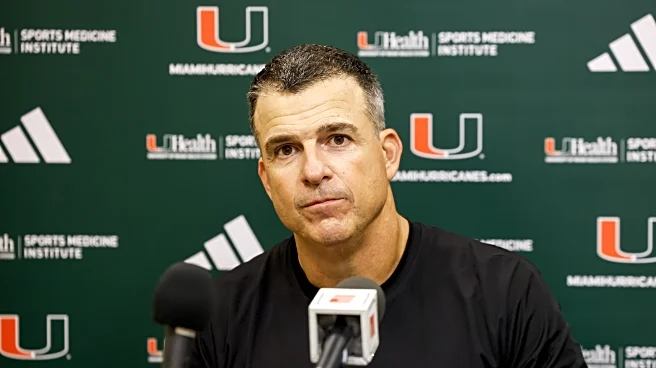What is the story about?
What's Happening?
The 2026 NFL Draft is being shaped by college football transfers, as players seek better opportunities and exposure. Zachariah Branch, who transferred from USC to UGA, has struggled to make an impact, with limited yardage and a high drop rate affecting his stock. Eric Singleton Jr., moving from Georgia Tech to Auburn, has maintained consistent performance, showing potential as a Day 2 draft pick. Nic Anderson, after transferring from Oklahoma to LSU, faces challenges due to injuries and limited production. KC Concepcion's transfer to Texas A&M has been successful, with improved performance and increased yards per target, positioning him as a strong draft prospect.
Why It's Important?
The transfer portal is significantly influencing college football and the NFL Draft landscape. Players are leveraging transfers to enhance their draft prospects, but the outcomes vary. Successful transfers can boost a player's visibility and draft stock, while unsuccessful ones may hinder their career progression. This trend reflects the growing importance of strategic decisions in college sports, impacting team compositions and player development. The ability to transfer and benefit from NIL deals is reshaping college football, offering players more control over their careers and financial futures.
What's Next?
As the season progresses, players like Zachariah Branch and Nic Anderson will need to improve their performance to enhance their draft prospects. KC Concepcion's continued success could lead to early Day 2 draft capital, while Eric Singleton Jr. aims to solidify his position as a consistent contributor. The transfer portal will remain a critical tool for players seeking better opportunities, and its impact on college football and the NFL Draft will continue to evolve. Teams and scouts will closely monitor these players' performances to assess their potential for professional success.
Beyond the Headlines
The transfer portal's influence extends beyond individual players, affecting team dynamics and recruitment strategies. Colleges must adapt to the changing landscape, balancing the benefits of incoming talent with the risks of losing key players. This shift may lead to increased competition among schools to attract top talent, potentially altering traditional power structures in college football. The long-term implications include a more dynamic and unpredictable college sports environment, with players exercising greater autonomy over their careers.
AI Generated Content
Do you find this article useful?
